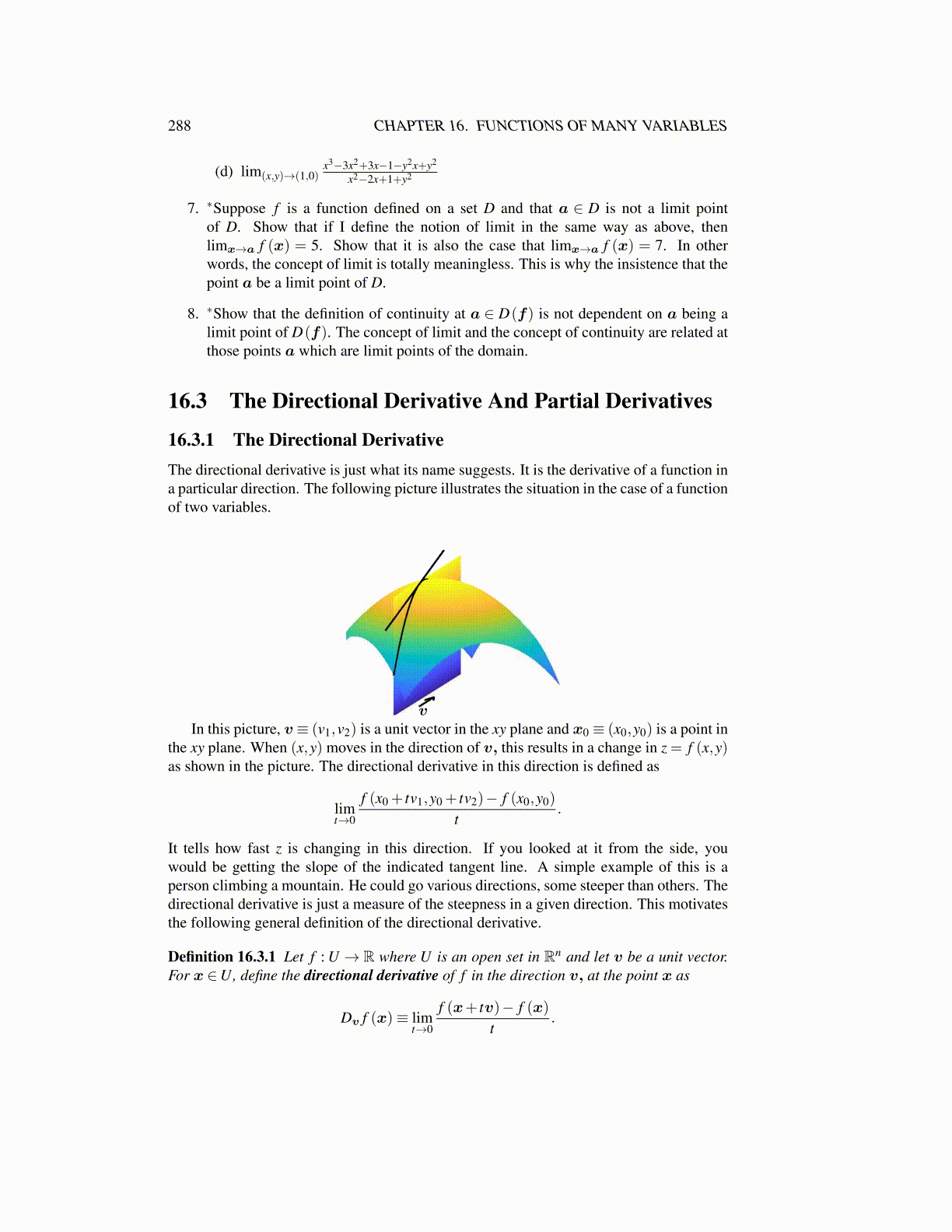
288 CHAPTER 16. FUNCTIONS OF MANY VARIABLES
(d) lim(x,y)→(1,0)x3−3x2+3x−1−y2x+y2
x2−2x+1+y2
7. ∗Suppose f is a function defined on a set D and that a ∈ D is not a limit pointof D. Show that if I define the notion of limit in the same way as above, thenlimx→a f (x) = 5. Show that it is also the case that limx→a f (x) = 7. In otherwords, the concept of limit is totally meaningless. This is why the insistence that thepoint a be a limit point of D.
8. ∗Show that the definition of continuity at a ∈ D(f) is not dependent on a being alimit point of D(f). The concept of limit and the concept of continuity are related atthose points a which are limit points of the domain.
16.3 The Directional Derivative And Partial Derivatives
16.3.1 The Directional DerivativeThe directional derivative is just what its name suggests. It is the derivative of a function ina particular direction. The following picture illustrates the situation in the case of a functionof two variables.
vIn this picture, v ≡ (v1,v2) is a unit vector in the xy plane and x0 ≡ (x0,y0) is a point in
the xy plane. When (x,y) moves in the direction of v, this results in a change in z = f (x,y)as shown in the picture. The directional derivative in this direction is defined as
limt→0
f (x0 + tv1,y0 + tv2)− f (x0,y0)
t.
It tells how fast z is changing in this direction. If you looked at it from the side, youwould be getting the slope of the indicated tangent line. A simple example of this is aperson climbing a mountain. He could go various directions, some steeper than others. Thedirectional derivative is just a measure of the steepness in a given direction. This motivatesthe following general definition of the directional derivative.
Definition 16.3.1 Let f : U → R where U is an open set in Rn and let v be a unit vector.For x ∈U, define the directional derivative of f in the direction v, at the point x as
Dv f (x)≡ limt→0
f (x+ tv)− f (x)t
.